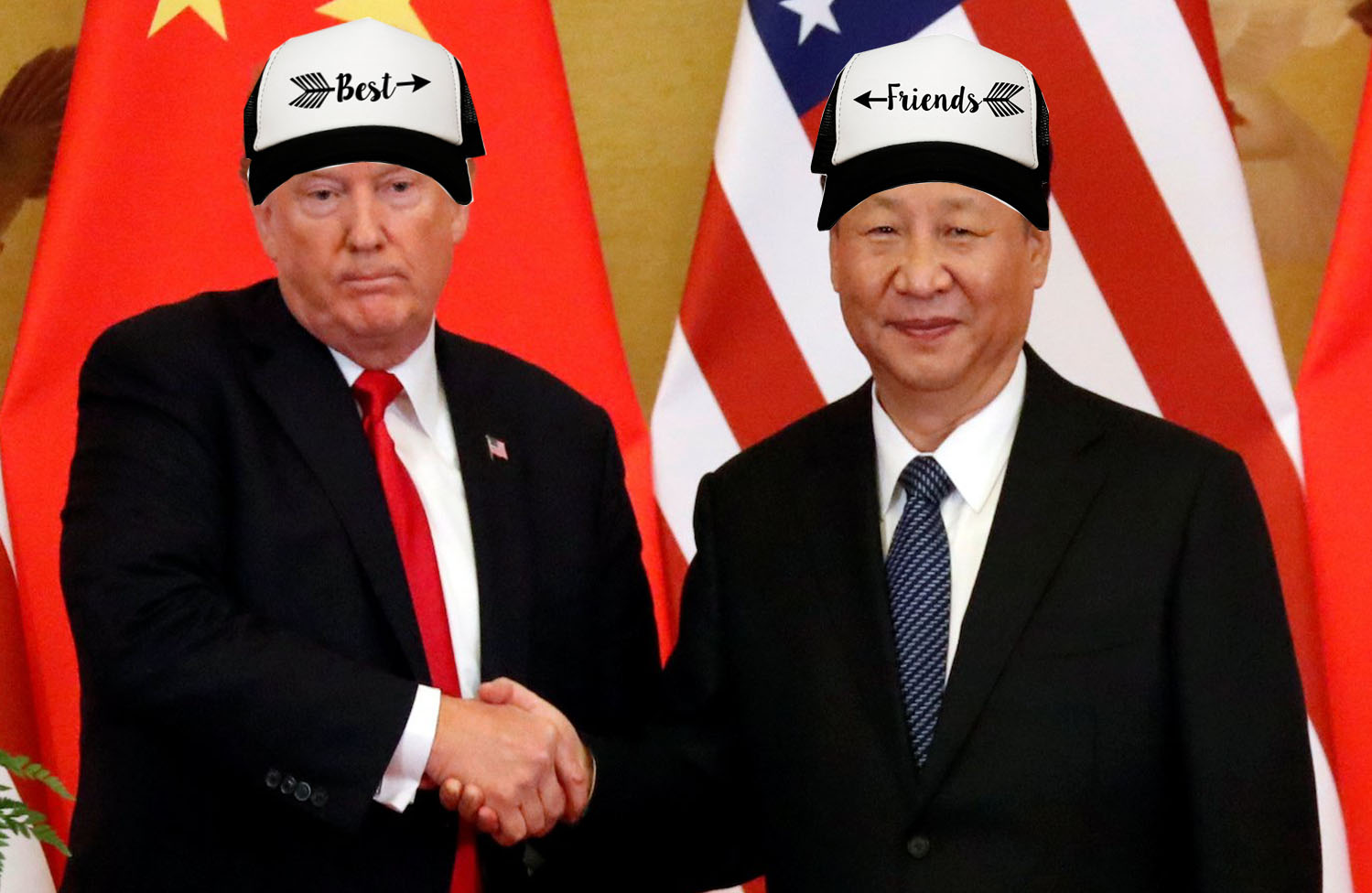In a shocking turn of events, the United States and China may have finally reached an accord to end the ongoing trade war that has occurred for the last few months. In an effort to prevent any rusher expansion of economic fractions between the two countries, President Trump and Chinese President Xi Jinping collaborated on a 90-day ‘ceasefire’ set to take place on the first of the new year. As for the details of the agreement, the U.S. pinky swore to leave existing tariffs on $200 billion of Chinese goods at 10 percent, and not to increase the rate to 25 percent like Trump originally intended.
In exchange for this gracious offer from the U.S., Trump wants the “incredible deal” to include opening the floor for discussions surrounding China’s issues with intellectual property theft, cybersecurity and forced technology transfer, according to Bloomberg. Additionally, the Chinese government agreed to purchase a “very substantial amount of agricultural, energy, industrial” and other manufactured goods from the US to reduce the country’s trade deficit with China, the White House said.
Earlier this year, several major tech companies in the US, notably Apple (AAPL) and Amazon (AMZN) discovered that microchips, which were manufactured in China, had been implanted into their data centers, as well as the centers of thirty other companies.
According to reports, the chips were developed by a computer hardware attack unit in the People’s Liberation Army, and gave hackers complete control of all server activity once the chip was planted, allowing them to steal data, contact other servers, and manipulate business operations. In addition to a recent report of this possible breach, Bloomberg says that they’ve “been on the subject of a top secret US government investigation,” related to these microchips, starting in 2015.
Information from this alleged investigation suggests that these Chinese chips were sold by Super Micro Computer, an information tech company, based in San Jose, California. They are described, by industry heavyweights, as the “Microsoft of the hardware world.”
As reported by the US intelligence services involved in the 2015 investigation, 17 “unnamed intelligence and company sources say that Chinese spies placed computer chips inside equipment used by the aforementioned companies, as well as multiple US government agencies,” which could potentially give China access to internal networks. Headlines like this only furthered tensions between the two countries, thus indicating a need for some semblance of agreement.
As for President Trump’s feelings on the negotiated cease-fire, he told reporters that “it’s an incredible deal. If it happens, it goes down as one of the largest deals ever made.” Trump’s impressive rhetoric aside, the deal, if effective, will hopefully work to bring peace back to the United States and China, who have been battling over trade issues and tech-related disputes for the last several months. As a result of Trump’s imposing of billions worth of tariffs on Chinese goods, U.S. stock prices have been more volatile than ever before. One analyst, Tai Hui, from JPMorgan Asset Management, said explained that “the good news is that this truce should be seen as Washington recognizing the potential damage on the US economy if tariffs escalate further.”
In direct response to the new agreement between the US and China, major indexes around the world showed positive growth on Monday. According to CNN, stocks leaped up 2% or more in London, Frankfurt, and Paris, as well in Hong Kong and Shanghai. In addition to the news of the tariff cease-fire, President Trump tweeted late Sunday evening that Beijing will “reduce and remove” tariffs on auto imports, which currently stand at 40%.
Although the agreement between the two of the world’s greatest economic superpowers was heartwarming to read about in the news, many analysts believe the idea represents a symbolic “kicking of the can” down the road. In other words, people are not fully impressed by the recent negotiations.
In fact, some US-China experts have argued that the deal offers significantly more benefits to the US than China. Heading into the negotiations, President Trump made it clear that he was not leaving the room without the two countries coming to an agreement on fentanyl, the key culprit in the epidemic of overdose deaths in the United States, given that US officials are confident that the drug is coming from overseas. Fentanyl-related negotiations have occurred since the days of former president Barack Obama, and at long last, China agreed to designate the opioid as a controlled substance.
“What he will be doing to fentanyl could be a game changer for the United States and what fentanyl is doing to our country in terms of killing people.”
–President Donald Trump





